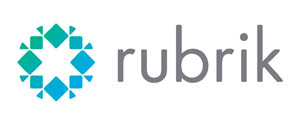Data First
Turning Data into a Secure, Compliant, and Valuable Asset
Manage data across its entire lifecycle — from creation to archiving — with solutions that ensure compliance, protection, and business agility.
The Data Dilemma
Why Unmanaged Data Puts Enterprises at Risk
Data is exploding in both volume and variety. Yet, without strong ILM practices, enterprises struggle with:
Rising storage costs from uncontrolled data growth
Compliance risks with regulations like DPDP, ISO 27701, and GDPR
Siloed systems causing inefficiency and poor data visibility
Security exposures from unstructured and unmanaged datasets
Why iValue
End-to-End ILM Built for Compliance and Scale
Alignment with DPDP Act, CERT-In, and ISO 27701 requirements
Integrated data protection with backup, recovery, and encryption
Intelligent archiving and tiered storage for cost efficiency
Vendor partnerships with OpenText, Rubrik, and Cloudera
Consulting-led implementation that maps ILM to business value

Policies Aligned to Regulations
Establish governance models that ensure compliance with data protection and privacy mandates while enabling secure sharing across teams.
Safeguarding Critical Information
Implement continuous backup, fast recovery, and encryption to keep data safe from loss, corruption, or cyberattacks.
Storing Data with Purpose
Optimize storage costs and compliance by retaining only what’s necessary — with intelligent tiering, archiving, and lifecycle policies.
Making Sense of Unstructured Data
Classify, index, and monitor sensitive information to improve visibility and reduce risks across structured and unstructured datasets.
Turning Data into an Asset
Use ILM-integrated analytics and data management platforms to transform raw data into insights that drive smarter decision-making.
Measurable Benefits
Reducing Risk, Maximizing Data Value
With iValue’s ILM approach, enterprises achieve:
Regulatory Assurance → Always audit-ready, aligned with evolving compliance mandates.
Cost Efficiency → Lower storage costs through tiered archiving and intelligent retention.
Improved Security → Continuous protection against loss, corruption, and unauthorized access.
Faster Insights → Accessible, well-governed data powering analytics and business innovation.
Sustainability → Leaner, optimized storage reducing energy use and carbon footprint.

Powered by Leaders
Trusted ILM Technology Ecosystem
iValue partners with world-class providers to deliver ILM excellence
FAQs
How is ILM different from regular data management?
ILM manages the entire lifecycle of data — from creation, classification, and active use, to archiving and secure disposal — ensuring security, compliance, and cost efficiency at every stage.
Can ILM help with compliance under India’s DPDP Act?
Yes. iValue’s ILM solutions are mapped to regulatory requirements, enabling enterprises to implement policies for consent, retention, and secure disposal aligned with DPDP.
How does ILM reduce costs?
By moving inactive data to lower-cost storage tiers, eliminating unnecessary duplication, and enabling smarter archiving, ILM reduces storage and infrastructure expenses significantly.
What industries benefit most from ILM?
While ILM applies across sectors, industries like BFSI, Telecom, Government, and Healthcare — with large volumes of sensitive, regulated data — benefit most from structured lifecycle management.
Data That Works for You
Our experts can help design an ILM roadmap that turns compliance obligations into business advantages.
Latest Resources

Will the DPDP Act redefine the B2B business?
All sales and marketing teams, whether at consumer-facing businesses or business-to-business enterprises, rely heavily on data to effectively target consumers. Without data, these teams and their organizations would find it

The Digital Personal Data Protection Act: What You Need to Know
The Digital Personal Data Protection (DPDP) Act is a new comprehensive data protection law in India that governs how organizations process, retain, and protect individuals’ data. The law aims to

Simplifying Compliance with Pre-defined DLP Policies
The Complex Landscape of Data Protection Laws You’re probably reading this because you’re considering whether to adopt a DLP solution for your organization. But what’s the primary objective behind it?


